Spotted Triopha or Triopha maculata
One of the most charming creatures found along the Central California coast is the Spotted Triopha nudibranch (Triopha maculata). With its colorful body, white polka dots, and bushy “beard”—properly called papillae—on the edge of its oral veil, this engaging sea slug is one of the most common you’ll encounter year-round, either on a dive or during a casual inspection of tidepools at low tide.
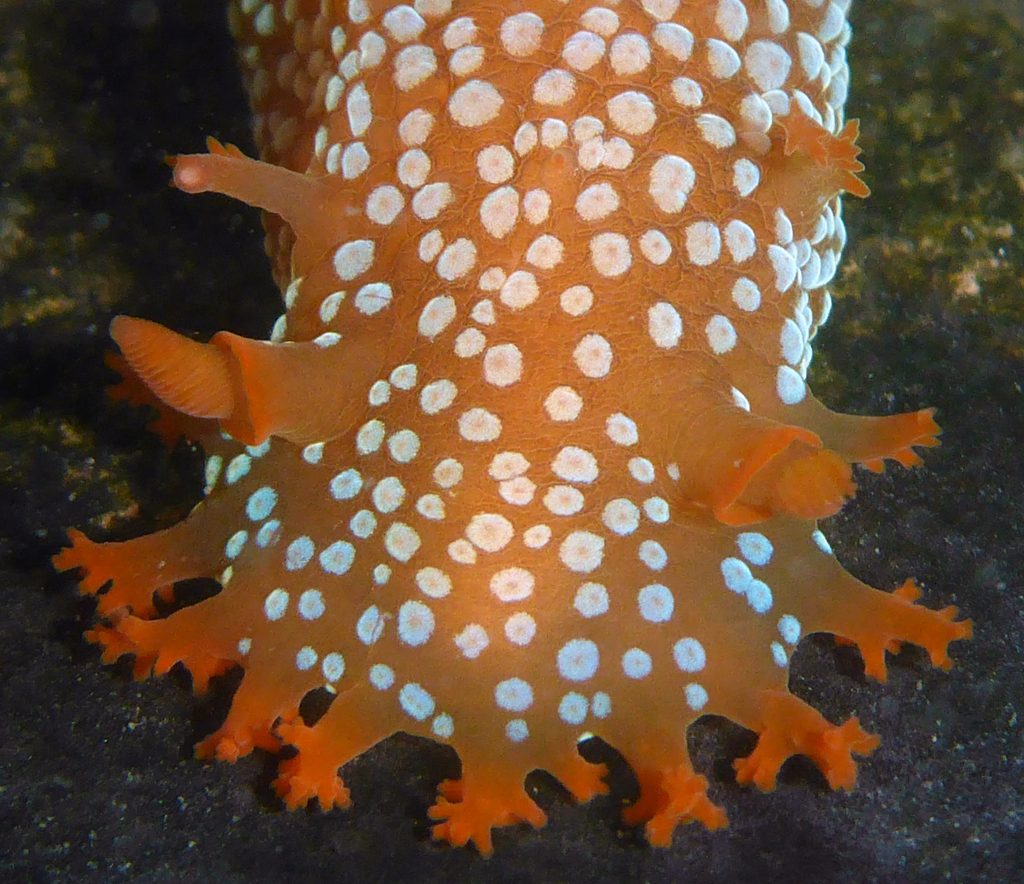
Triopha maculata color variants
The only minor difficulty is realizing that you’re looking at one. Spotted Triophas come in at least two color variants that caused even veteran scientists to think they were different species until 1977, when malacologist Antonio Jose Ferreira published a paper sorting this out.¹
“The original name for the yellow color variant of this species was Triopha grandis MacFarland, 1905,” wrote nudibranch researcher Dave Beherens in 2003. “Triopha maculata was intended for the dark specimens, as shown in color plate 19 in MacFarland’s memoirs, published posthumously in 1966. Tony Ferreira’s review in 1977 cleaned up the taxonomy for this genus. Surprisingly in this day of taxonomic revision maelstrom, nobody has touched it since.” Sixteen years later, the maelstrom continues, but the paper remains valid. They are indeed one species with quite a bit of color variation.
Nudibranch researchers have since reported the two color variants interbreeding in laboratory settings, although they may not encounter each other as often in the wild.
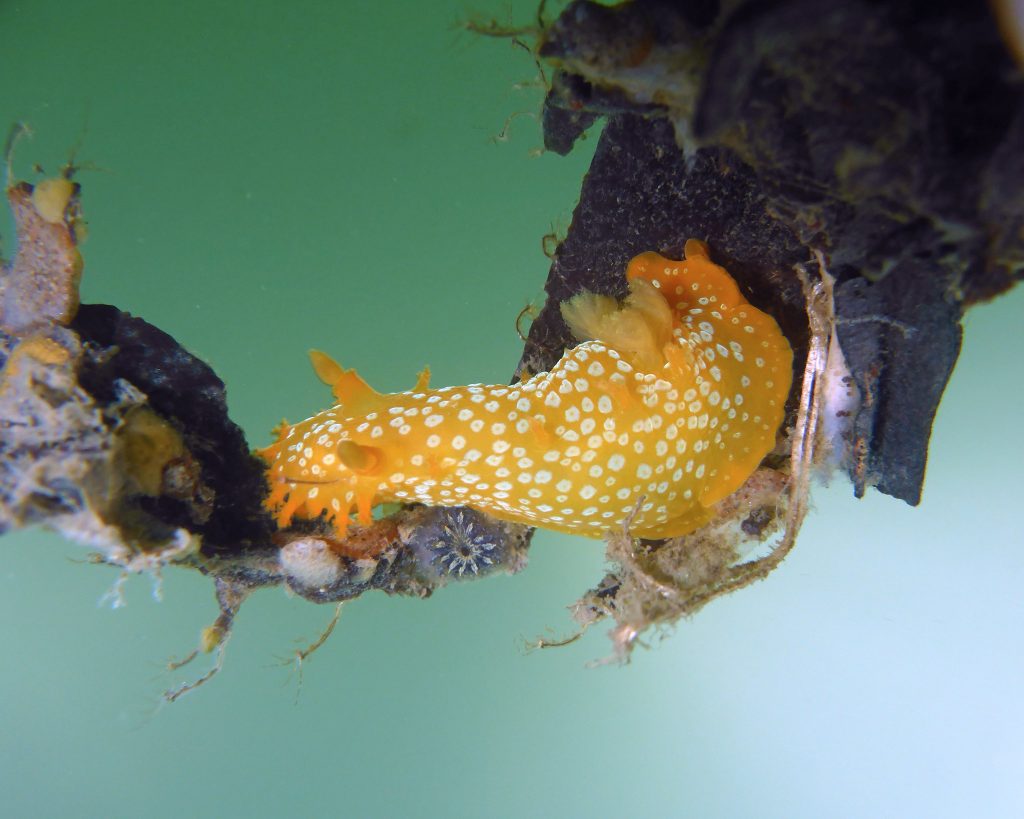
The pale yellow variant of T. maculata is often found on kelp (Macrocystis sp.), including detached, drifting kelp mats in harbors and estuaries. Like all nudibranchs, they are carnivores, and the pale T. maculata can often be seen feeding on bryozoans (including those in the genuses Membranipora, Bugula, and Crisia) attached to the kelp. If conditions are right and there is plenty of prey, they have been reported to grow up to eighteen centimeters long, although five centimeters seems to be a more normal maximum. They are a light orange color with slightly darker rhinophores and oral processes, and their spots are large and bluish-white. Juveniles look like miniature versions of the hulking adults.
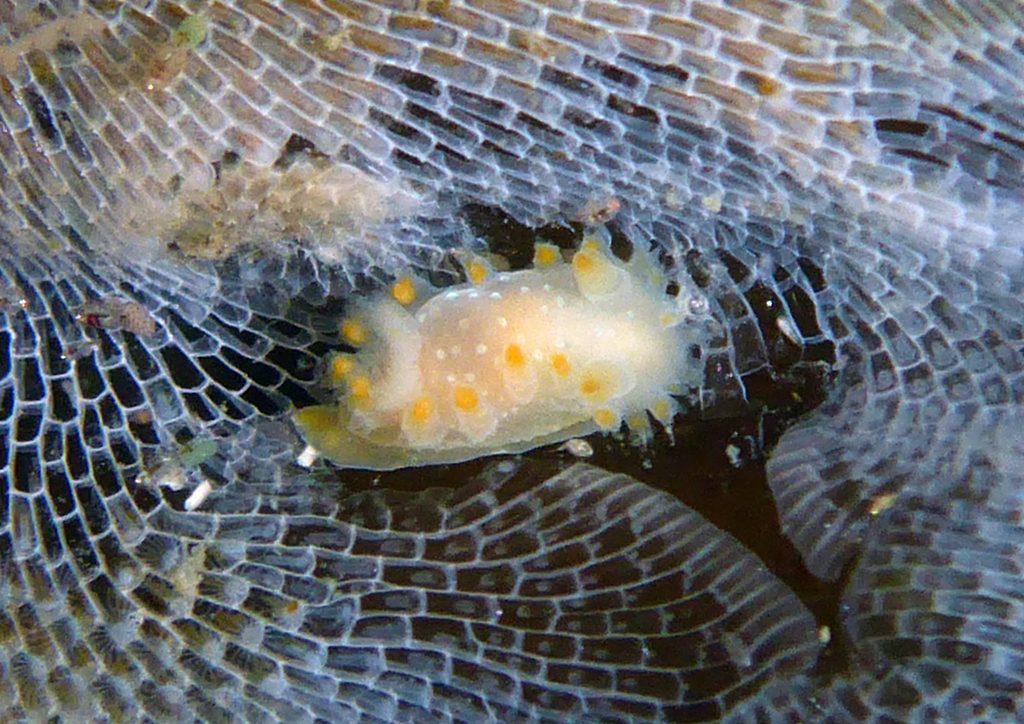
The dark variant of T. maculata, on the other hand, seems to be most often found in the rocky intertidal, where it feeds on other species of bryozoans.
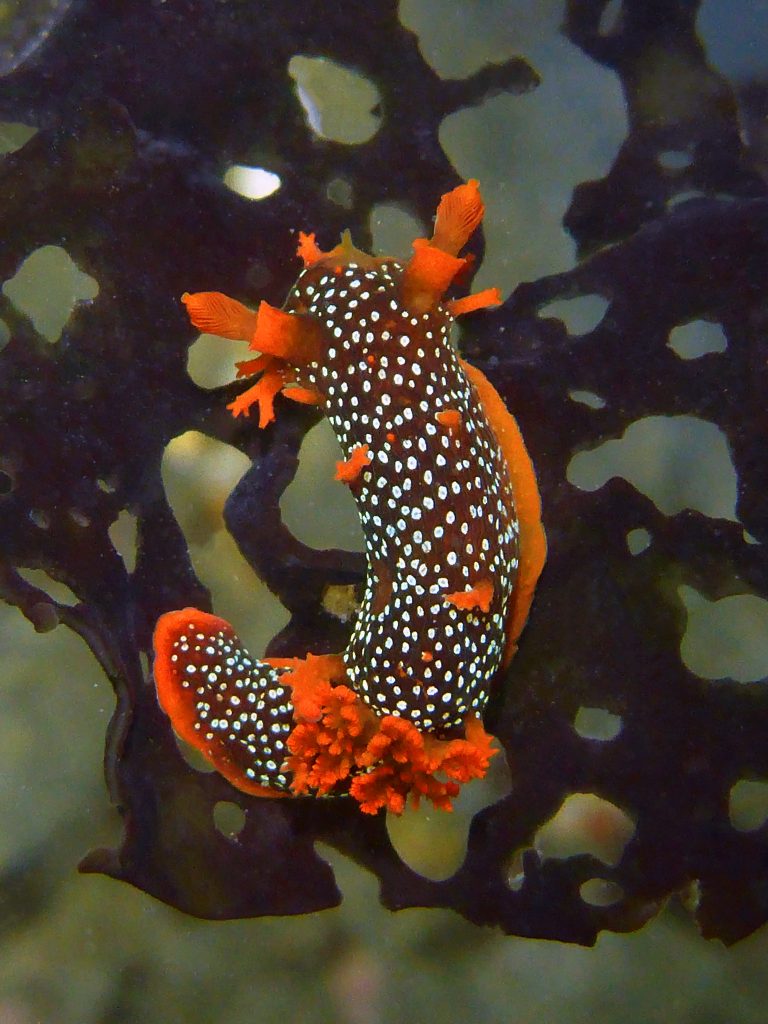
The juveniles are about one centimeter long and bright red-orange, with a scattering of barely visible white spots. As adults, they do not grow as large as the yellow variant, topping out at two centimeters, but are perhaps even more visually striking with their rufous brown bodies, bright orange gills, rhinophores and “beard,” and high-contrast white spots.
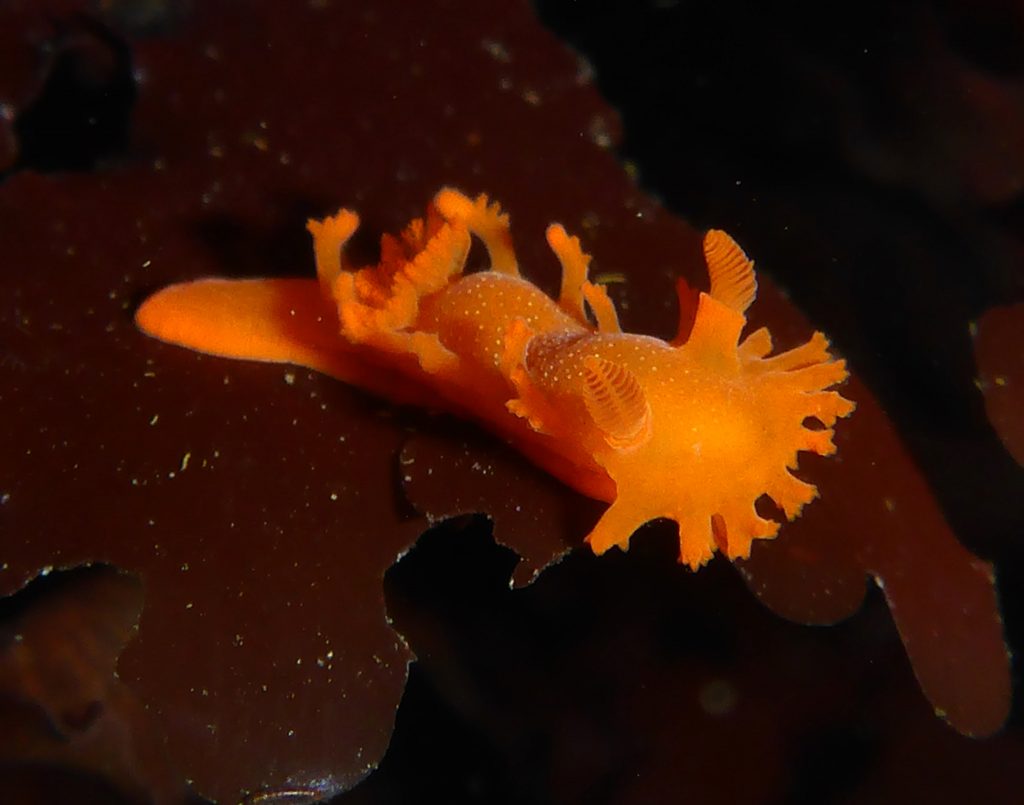
A third color variant of T. maculata remains a solid ochre yellow color throughout its life, with a scattering of faint white spots. This variant is most likely seen in Southern California, particularly in tidepools south of Los Angeles, though a few individuals are occasionally found further north.
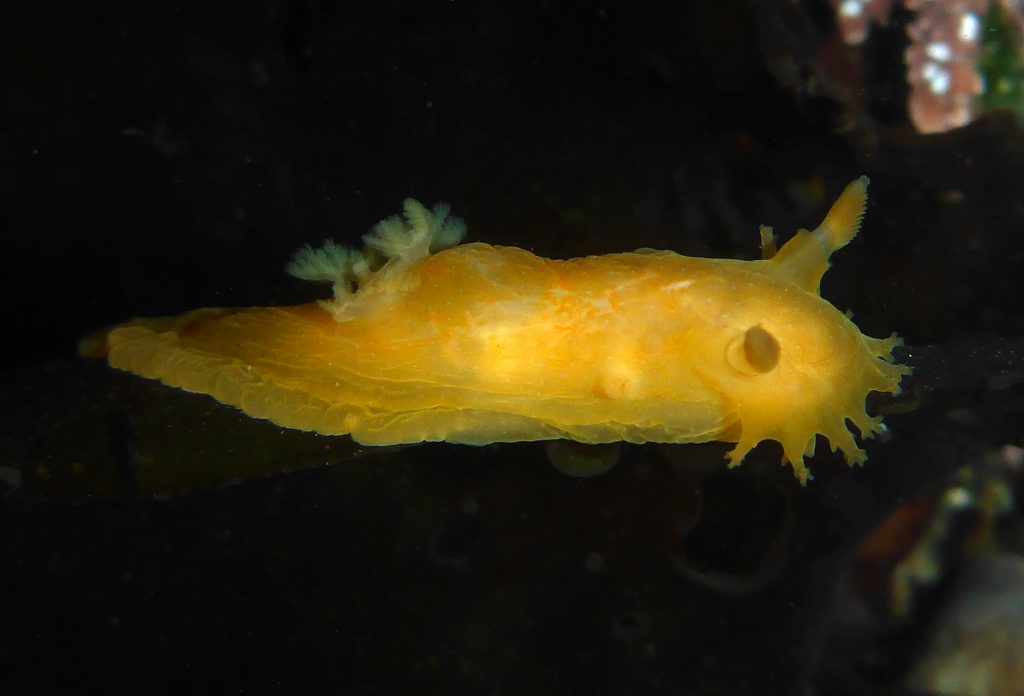
Send in the Sea Clowns – Triopha catalinae
Far more easy to identify is T. maculata’s cousin, Triopha catalinae. Despite their scientific name (they were named for Catalina Island when they were first described in 1863), this flamboyant sea slug species is commonly known as a Sea Clown. Not small by nudibranch standards, they grow to as much as seventy millimeters if conditions permit. T. catalinae have an all-white body with crown-shaped red-orange papillae on its back, with a red-orange “beard.” The tips of their branchial plumes (gills) and rhinophores are red-orange as well. Like many nudibranchs, it is thought that their aposematic coloration warns would-be predators that at minimum, they taste bad and are potentially toxic as well.
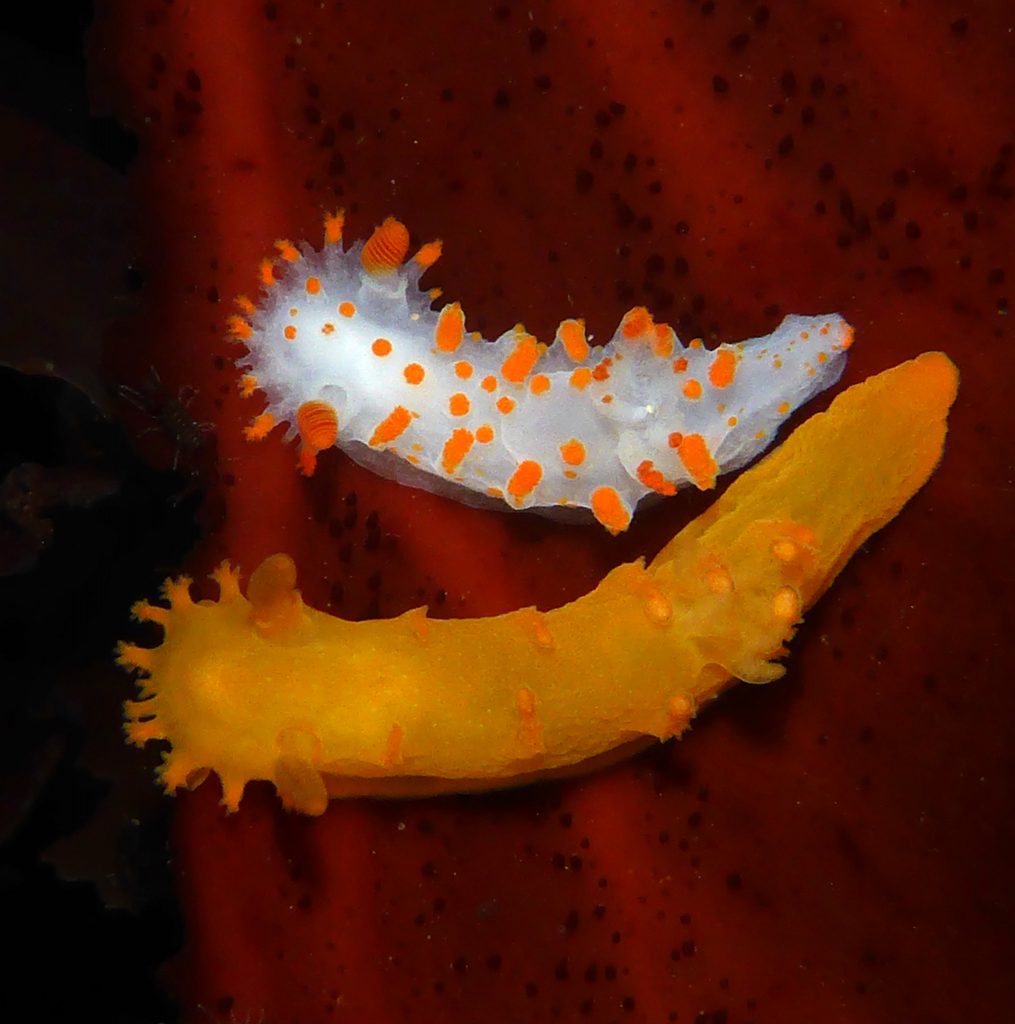
Although less common than T. maculata, these entertaining little creatures are nonetheless reasonably easy to spot in rocky California tidepools and subtidal settings. Like their cousins, Sea Clowns move slowly along a variety of substrates, grazing on bryozoans. Smaller individuals can even crawl along on the underside of the surface of the water in a tidepool, though there seems to be a size limit before they grow too heavy to continue this behavior. Triopha egg ribbons are also similar to those of many large dorid nudibranchs: wide, floppy rosettes of white or cream, attached by one edge to a rock, kelp, or other algae. Finding these distinctive egg masses is a good way to discover adult Triophas hiding nearby.
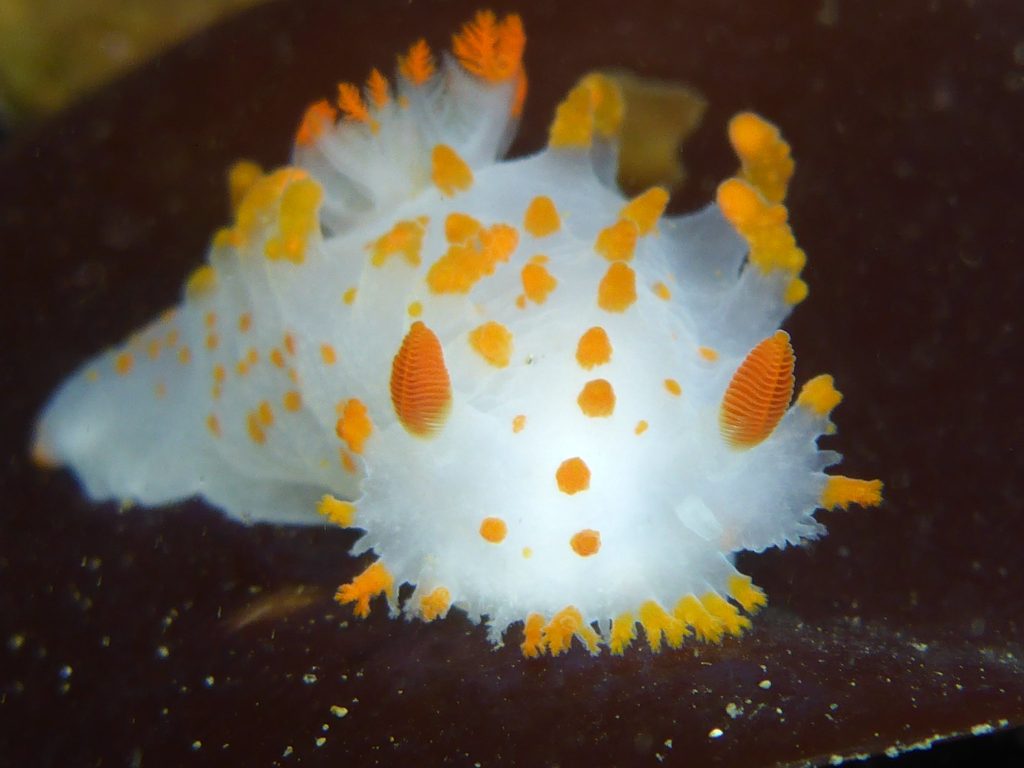
For best photography results and best tidepooling etiquette, all nudibranchs, including Triophas, should not be handled. They’re slow movers and picky eaters, and therefore should be left in the same tidepool where their bryozoan prey already meets their exacting standards. As always, I’d encourage you to assist marine researchers by posting your photos of California nudibranchs and other life to iNaturalist.org (a free, citizen science platform that IDs your photo observations for you, among other things). To make it even easier, here’s a field guide to California nudibranchs I built for iNaturalist. Enjoy your explorations!
Works Cited
- Ferreira, Antonio Jose, 1977. A Review of the Genus Triopha (Mollusca: Nudibranchia). The Veliger 19(4)387-402.
Guest Author, Robin Agarwal
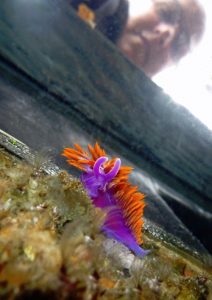
Lying flat on a bouncing floating dock underneath one of the biggest tourist-attraction piers in California, with my head and arms hanging over the side, I am frequently reminded of the kindness of fellow humans who think I’ve had a stroke or dropped my phone. No—just photographing sea slugs! I point, and show them a few photos on the back of my cheap underwater macro camera, and presto, another nudibranch enthusiast.
I was a tidepool kid who went astray and graduated with a liberal arts degree. In the last decade, I’ve returned to the tidepools and found a particular passion for photographing nudibranchs and other intertidal marine life. I’m co-editor of the California Sea Slugs Guide, and the Dock Fouling in California project on iNaturalist.org, where I have posted about 4,000 geotagged observations of nudibranchs, mostly along the Central California coast. Since I offer all my photos free to non-profit organizations (my way of thanking them for the work they do), you can find them all over the internet as well as Bay Nature magazine and NOAA National Marine Sanctuary informational signage. I’ve also been an enthusiastic contributor to a few scientific papers on nudibranchs, most recently Heterobranch Sea Slug Range Shifts in the Northeast Pacific Ocean Associated with the 2015-16 El Nino by Goddard et al. (2018).
Subscribe to our weekly blog to have posts like this delivered to your inbox each week.
Help us protect and restore the Morro Bay estuary!
- Donate to the Estuary Program today and support our work in the field, the lab, and beyond.
The Estuary Program is a 501(c)3 nonprofit. We depend on funding from grants and generous donors to continue our work. - Support us by purchasing estuary-themed gear from ESTERO. This locally owned and operated company donates 20% of proceeds from its Estuary clothing line and 100% of Estuary decal proceeds to the Estuary Program. Thank you, ESTERO!
- Purchase items from the the Estuary Program’s store on Zazzle. Zazzle prints and ships your items, and the Estuary Program receives 10% of the proceeds. Choose from mugs, hats, t-shirts, and even fanny packs (they’re back!) with our fun Estuary Octopus design, our classic Estuary Program logo, or our Mutts for the Bay logo.